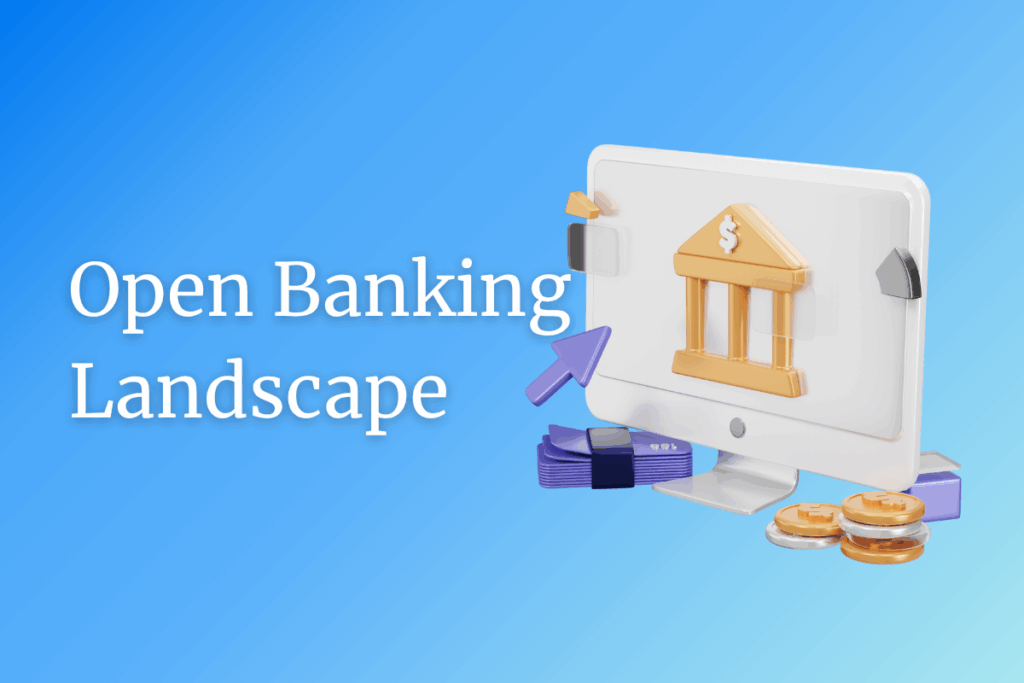Imagine if your smartphone could only run apps made by Apple or Samsung, not Facebook, Spotify, or Gmail. The tech world would look drastically different, stifled by closed ecosystems and limited innovation. Until recently, this was exactly how banking worked. Your financial data lived behind fortress-like walls, accessible only to the institution that held your account.
Then came open banking, the financial industry’s equivalent of opening up app stores to third-party developers. Suddenly, your bank account transformed from an isolated vault into a dynamic platform where fintech innovators could build services you never knew you needed. This isn’t just another regulatory requirement or technical upgrade; it’s a fundamental reimagining of who controls your financial life and what becomes possible when data flows freely with your consent.
Open banking represents one of the most significant transformations in the financial services industry, fundamentally changing how consumers and businesses interact with their financial data. This revolutionary approach to banking has created new opportunities for fintech companies while presenting unique challenges that require careful navigation.
Understanding the Open Banking Landscape
Conceptual Foundations
Open banking is a banking practice that enables third-party financial service providers to access consumer banking, transactions, and other financial data from banks and non-bank financial institutions through application programming interfaces (APIs). This system allows customers to share their financial information securely with authorized fintech companies and other service providers, creating a more interconnected and competitive financial ecosystem.
The concept operates on the principle that consumers should have control over their financial data and the right to share it with trusted third parties. Banks must provide standardized access to account information, payment initiation services, and transaction history through secure APIs when a customer grants permission. This data sharing enables innovative financial products and services that were previously impossible or difficult to deliver. This shift is underpinned by regulatory initiatives, such as the European Union’s Revised Payment Services Directive (PSD2) and the UK’s Open Banking Standard, which mandate banks to provide API access to licensed TPPs.
The core principles of open banking include:
- Consumer Consent: Users retain control over data sharing, granting explicit permission for third-party access.
- Data Standardization: APIs adhere to common technical standards to ensure seamless interoperability.
- Security and Transparency: Robust encryption and authentication protocols protect data integrity, while clear disclosures inform users about how their information is used.
The open banking framework typically involves four key participants: the customer who owns the data, the account servicing payment service provider (usually a traditional bank), the third-party provider offering innovative services, and the regulatory authority ensuring compliance and security standards.
How Open Banking Works?
Open banking operates through the use of application programming interfaces (APIs), which facilitate the secure sharing of financial data between banks and third-party providers (TPPs). These APIs are essential for enabling seamless communication and integration between diverse financial services, allowing consumers to access a broader range of banking solutions and services tailored to their needs.
Customer Consent and Authorization
The open banking workflow begins with customer consent. When users initiate a service through a TPP, such as a budgeting app or loan comparison platform, they are redirected to their bank’s interface to authenticate and authorize data sharing. This process, often facilitated by OAuth 2.0 protocols, ensures access is granted only after explicit user approval. Consent can be tailored to specific data types (e.g., transaction histories or account balances) and durations (e.g., one-time access or recurring updates).
API Architecture and Data Sharing
The success of open banking heavily relies on standardized APIs that ensure consistent security protocols and interoperability among different financial institutions and fintech companies. For example, a bank’s API might allow a fintech app to retrieve a user’s monthly spending patterns or initiate a payment directly from their account. These standards streamline the development process for new financial services and reduce the complexity for consumers navigating through various platforms. These APIs are designed to comply with regulatory standards, such as PSD2’s requirement for “strong customer authentication” (SCA), which often involves multi-factor verification.
Types of Shared Data
- Account Information: Balances, transactions, and recurring payments.
- Payment Initiation: Direct debits, one-time transfers, and standing orders.
- Credit Data: Card limits, interest rates, and repayment histories.
This process enables various use cases, including account aggregation services that display multiple bank accounts in one interface, payment initiation services that allow direct bank transfers without traditional card networks, and financial management tools that analyze spending patterns across different accounts. The system maintains security through strong customer authentication, encryption, and regular compliance monitoring.
Technological Innovations
Open banking harnesses advanced technologies such as artificial intelligence (AI) and machine learning (ML) to enhance customer experiences and improve data security. These technologies allow for sophisticated risk assessment processes to reduce fraud and streamline user verification. AI-driven systems help institutions accurately match customer data, minimizing false positives and enhancing the overall efficiency of financial services.
Collaboration Between Banks and Fintech
Integrating fintech solutions with traditional banking systems fosters collaboration rather than competition. For instance, partnerships between banks and fintechs, like Santander and Ripple, leverage blockchain technology to simplify international payments, showcasing how open banking can innovate traditional banking practices. Banks can modernize their operations through strategic alliances, enhance customer service, and remain competitive in an increasingly digital financial landscape.
Consumer Empowerment and Personalization
Open banking empowers consumers by providing them with greater control over their financial data and the ability to choose from a wider array of financial products. Businesses can tailor their offerings to individual customer preferences by analyzing transaction patterns, leading to more personalized financial services. This capability increases customer satisfaction and drives loyalty and engagement within the financial ecosystem.
Technology Driving Open Banking Innovation
Several key technologies underpin the open banking revolution, with APIs serving as the fundamental building blocks that enable secure data sharing between different financial platforms. Cloud computing provides the scalable infrastructure necessary to handle increased data processing and storage requirements for open banking systems.
Application Programming Interfaces (APIs)
APIs are at the core of open banking, acting as the digital gateways that facilitate secure data exchange between financial institutions and third-party providers. They provide standardized methods for accessing financial data, enabling services such as account balance retrieval, transaction initiation, and spending analysis. Using APIs ensures that data sharing occurs securely and with consumers’ consent, allowing them to maintain control over their information.
Types of APIs
Open banking employs three primary types of APIs:
- Data APIs provide read-only access to account holder information, enabling third parties to fetch essential data like balances and transaction histories.
- Transaction APIs allow for the initiation of payments and other transactional services, facilitating seamless financial operations.
- Product APIs generate personalized product recommendations based on users’ financial behavior and needs.
Adopting an API-first approach promotes interoperability among financial services and positions open banking similarly to Banking-as-a-Service (BaaS), where both models leverage technology to enhance user experiences in the financial sector.
Artificial Intelligence (AI)
Artificial intelligence and machine learning technologies enhance open banking services by enabling sophisticated financial analysis, fraud detection, and personalized product recommendations. These technologies can analyze transaction patterns, predict customer behavior, and provide previously unavailable insights to consumers and financial service providers. This capability helps financial institutions create more relevant and personalized services for consumers, thereby improving customer satisfaction and engagement.
Through AI-driven applications, users can enjoy features like real-time financial monitoring, budgeting assistance, and predictive analytics, which contribute to smarter financial decision-making. This seamless integration of AI into open banking is expected to drive user adoption and trust in digital financial services.
Blockchain and Decentralized Finance (DeFi)
While emerging in the open banking space, blockchain technology offers potential solutions for enhanced security, transparency, and trust in financial transactions. Smart contracts could automate certain banking processes and reduce the need for intermediaries. As open banking evolves, the potential shift from centralized bank servers to distributed storage systems could mitigate risks associated with data breaches and enhance user privacy. The immutability and transparency of blockchain also support secure transactions, which can further streamline financial operations in an open banking context.
Real-Time Payment Systems
Instant payment rails, such as the UK’s Faster Payments Service and Australia’s New Payments Platform (NPP), integrate with open banking APIs to enable seamless transactions. These systems reduce settlement times from days to seconds, benefiting businesses through improved liquidity management.
Mobile Technology
Mobile technology plays a crucial role in open banking adoption, as most consumers interact with fintech services through smartphone applications. The proliferation of mobile banking has created consumer expectations for seamless, intuitive financial services that open banking helps fulfill.
Future Trends in Open Banking and Fintech
The future of open banking points toward even greater integration and sophistication in financial services. Embedded finance, where financial services are integrated directly into non-financial platforms and applications, represents a significant trend enabled by open banking infrastructure. This development allows e-commerce platforms, social media applications, and other digital services to seamlessly offer banking and payment services within their existing user experiences.
Real-time payments and instant financial services are becoming increasingly important as consumers expect immediate transaction processing and account updates. Open banking facilitates these capabilities by enabling direct bank-to-bank transfers and real-time account balance checks.
Another significant trend is the expansion of open banking beyond traditional banking services into insurance, investments, and other financial products. Open insurance and open wealth management are emerging concepts that apply similar data-sharing principles to broader financial services.
Artificial intelligence integration will continue to deepen, with more sophisticated algorithms providing personalized financial advice, automated savings programs, and predictive financial planning services. The combination of open banking data with AI capabilities creates unprecedented opportunities for customized financial solutions.
Global Regulatory Framework for Open Banking
Open banking is governed by a complex landscape of regulatory frameworks designed to ensure consumer protection, data security, and compliance among financial institutions and third-party providers (TPPs).
Europe is leading the way through the Revised Payment Services Directive (PSD2), implemented in 2018. This regulation requires banks to provide licensed third-party providers with access to customer account information and payment initiation services. The European approach emphasizes consumer protection, data security, and fostering innovation in financial services.
The United Kingdom has developed one of the most comprehensive open banking frameworks globally. It mandates that the largest banks provide standardized account information and payment initiation APIs. The UK’s Competition and Markets Authority has driven this initiative to increase competition and innovation in banking services.
In the United States, the regulatory approach has been more market-driven, with the Consumer Financial Protection Bureau providing guidance rather than mandating specific requirements. However, recent developments suggest a movement toward more formal regulation, with proposed rules for data sharing and consumer protection in financial services.
Other regions, including Canada, Singapore, Hong Kong, and Brazil, have developed their own open banking frameworks, each adapted to local market conditions and regulatory philosophies. Though implementation approaches vary considerably, the global trend clearly moves toward greater financial data portability and third-party access.
Australia’s Open Banking Regulatory Perspective
Australia has implemented the Consumer Data Right (CDR) framework, which extends beyond banking to include the energy and telecommunications sectors. The CDR’s Open Banking component began rolling out in 2020, starting with the four major banks and gradually expanding to smaller institutions.
The Australian Competition and Consumer Commission oversees the CDR framework, emphasizing consumer control over data sharing and strong privacy protections. Australian regulations require explicit consumer consent for data sharing and provide granular controls over what information is shared and for how long.
The phased implementation approach in Australia has allowed for testing and refinement of technical standards and security requirements. The regulatory framework includes strict accreditation requirements for data recipients, comprehensive data standards, and robust dispute-resolution mechanisms.
Australian banks must provide access to product reference data, customer account information, and transaction details through standardized APIs. The framework also includes provisions for payment initiation services, though implementation has been more gradual than in some other jurisdictions.
Risks and Challenges in Open Banking
Data Privacy and Security Threats
The expanded attack surface created by API-driven data sharing heightens the risks of breaches and fraud. In 2023, a vulnerability in a major European bank’s API allowed hackers to intercept transaction data, affecting over 100,000 users. Such incidents underscore the need for continuous security audits and threat modeling. Moreover, consumers often lack awareness of how their data is used post-consent, leading to potential misuse by TPPs for targeted advertising or credit scoring.
Regulatory and Compliance Complexities
Divergent regulations across jurisdictions complicate global implementation. For example, while PSD2 mandates open banking in the EU, other regions like Asia-Pacific have fragmented frameworks, creating interoperability challenges. Compliance costs are also significant: banks must invest in API infrastructure, legal teams, and customer education programs, which can strain smaller institutions.
Consumer Trust and Adoption Barriers
Despite regulatory safeguards, consumer skepticism persists. A 2024 survey revealed that 42% of UK users avoid open banking services due to privacy concerns. Overcoming this requires transparent communication about data usage and demonstrable benefits, such as personalized financial insights or faster loan approvals.
Conclusion
Open banking represents a transformative shift in the financial services industry, creating unprecedented opportunities for innovation while presenting significant challenges that require careful management. The success of open banking initiatives depends heavily on robust regulatory frameworks, advanced technology implementation, and comprehensive quality assurance processes.
As the fintech industry evolves, open banking will likely become the foundation for even more innovative financial services and customer experiences. Organizations that invest in proper implementation, security measures, and quality assurance will be best positioned to capitalize on the opportunities that open banking provides while effectively managing the associated risks.
The future of financial services will be increasingly interconnected, data-driven, and customer-centric, with open banking catalyzing this transformation. Success in this new landscape will require collaboration between traditional financial institutions, fintech innovators, regulators, and technology providers to create a secure, efficient, and customer-focused financial ecosystem.
ContactContact
Stay in touch with Us



![The 10 Best API Testing Tools [2025 Update]](https://shiftasia.com/wp-content/uploads/2024/07/Top-API-testing-tools.jpg)
